Self-Assessment is a system HM Revenue and Customs (HMRC) uses to collect Income Tax.
Tax is usually deducted automatically from wages and pensions. People and businesses with other income must report it in a Self-Assessment tax return.
If you need to send a Self-Assessment tax return, fill it in after the end of the tax year (5 April) it applies to.
You must send a return if HMRC asks you to.
You may have to pay interest and a penalty if you do not file and pay on time.
Sending your return
You can file your Self-Assessment tax return online.
If you need a paper form you can:
• download the SA100 tax return form
• call HMRC and ask for the SA100 tax return form
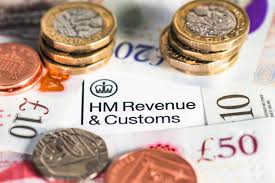
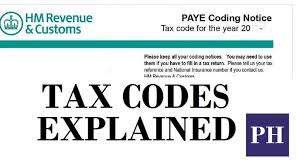
Send your tax return by the deadline.
You must tell HMRC by 5 October if you need to complete a tax return and you have not sent one before. You could be fined if you do not.
You can tell HMRC by registering for Self-Assessment. Check how to register for Self-Assessment.
You need to keep records (for example bank statements or receipts) so you can fill in your tax return correctly.
HMRC will calculate what you owe based on what you report.
How much tax you pay will depend on the Income Tax band you’re in. There’s a different rate for Capital Gains Tax if you need to pay it, for example you sell shares or a second home.
You must send a tax return if, in the last tax year (6 April to 5 April), any of the following applied:
Most people pay Income Tax through PAYE. This is the system your employer or pension provider uses to take Income Tax and National Insurance contributions before they pay your wages or pension. Your tax code tells your employer how much to deduct.
You must tell HMRC by 5 October if you need to complete a tax return and have not sent one before. You can tell HMRC by registering for Self-Assessment.
Other reasons for sending a return
You can choose to fill in a tax return to:
You must register for Self-Assessment by 5 October if you need to complete a tax return and you have not sent one before.
If you’re new to Self-Assessment, you’ll need to keep records (for example bank statements or receipts) so you can fill in your tax return correctly.
You’ll need to pay your tax bill by 31 January.
To prepare, once you’ve registered you can:
• estimate how much tax you might need to pay
• set up monthly or weekly payments to help you budget for your bill
• send your tax return any time after 5 April – doing it earlier means you’ll know what you owe
Sending a return
• submitting an online return
• sending a paper return
Check the filing deadlines. The deadline for sending a paper return is before the deadline for an online return.
You can send your return any time after 5 April. Sending it earlier means you:
• find out what you owe
• can budget – if you want to make weekly or monthly payments
• have time to pay your bill by 31 January
• can set up a payment plan, if you do not think you can pay on time
• Submit an online return
Send a paper return
If you need a paper copy of the main Self-Assessment tax return you can:
• download the SA100 tax return form
• call HMRC and ask for the SA100 tax return form
• If you need to send a tax return for trustees of a registered pension, you must download form SA970.
You can download all other forms and supplementary pages.
After sending your paper return, you can check when to expect a reply from HMRC.
Use commercial software to send a return
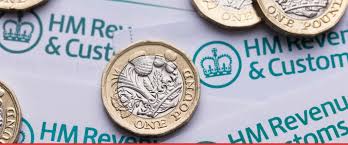
You must tell HMRC as soon as possible if you believe you no longer need to send a tax return.
HMRC needs time to review your request before the Self-Assessment deadline of 31 January. You may have to pay a penalty if you do not tell them early enough. When you no longer need to send a tax return You might no longer need to send a return because, for example:
Sign in to your account and fill in an online form to:
• close your Self-Assessment account
• ask to be removed from Self-Assessment for a specific tax year
• You’ll need to provide your National Insurance number and your UTR number.
If you cannot fill in the online form you can also contact HMRC by phone or post. If you’re no longer self-employed You also need to tell HMRC that you’ve stopped being self-employed.
If you’ve already told HMRC that your self-employment has ended, HMRC may still ask you to send tax returns for future years.
If you’ve checked and you do not need to send a tax return, you’ll need tell HMRC.
You can track the progress of your form in your online account.
HMRC will write to you and confirm if you need to send a return.
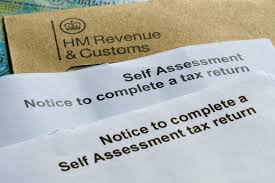
HM Revenue and Customs (HMRC) must receive your tax return and any money you owe by the deadline.
The last tax year started on 6 April 2024 and ended on 5 April 2025.
Deadline for telling HMRC you need to complete a return
You must tell HMRC by 5 October if you need to complete a tax return and have not sent one before.
You can tell HMRC by registering for Self-Assessment.
Deadline for submitting a paper return
If you’re sending a paper tax return, you must submit it by midnight 31 October 2025.
Deadline for submitting an online return
If you’re sending an online tax return, you must submit it by midnight 31 January 2026.
If you want HMRC to automatically collect tax you owe from your wages and pension, submit your online return by 30 December. Find out if you are eligible to pay this way.
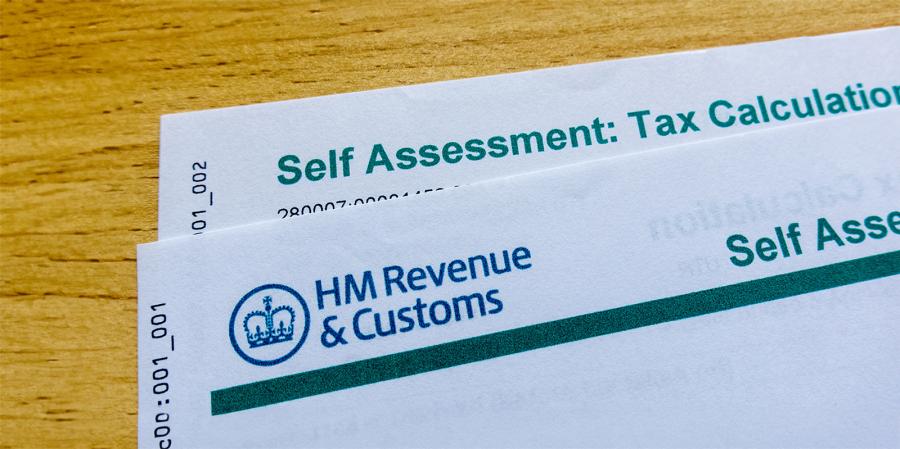
You need to pay the tax you owe by midnight 31 January 2026.
There’s usually a second payment deadline of 31 July if you make advance payments towards your bill (known as ‘payments on account’).
You’ll usually pay a penalty if you’re late. You can appeal against a penalty if you have a reasonable excuse.
To avoid a payment penalty, you can ‘estimate your Self-Assessment tax bill’ before sending your tax return to:
give you an idea of what your bill is likely to be allow you to budget and pay on time
If you do not know your profit for the whole tax year
You might not know what your profit will be for the whole tax year if, for example:
If you do not know what your profit will be for the whole tax year before the reporting deadline, you should work out what it’s likely to be (known as ‘provisional figures’) and include those.
You should tell HMRC that you’ve used provisional figures when you submit your return.
When you find out what your profit was for the whole tax year, you’ll need to change your return. You have 12 months from the Self-Assessment deadline to make these changes.
If more tax is due, you’ll need to pay interest on the difference between your estimates and the final figures. The interest will be worked out from the original due date for payment. If you have overpaid tax, then you’ll get interest paid to you.
HMRC must receive a paper tax return by 31 January if you’re a trustee of a registered pension scheme or a non-resident company. You cannot send a return online. HMRC might also email or write to you giving you a different deadline if they were late in sending out your return. Partnership returns if you have a company as a partner
If your partnership’s accounting date is between 1 February and 5 April and one of your partners is a limited company, the deadline for:
• online returns is 12 months from the accounting date
• paper returns is 9 months from the accounting date
The Self-Assessment deadline for these tax years has passed. Send your tax return or payment as soon as possible – you’ll have to pay a penalty.
You’ll get a penalty if you need to complete a tax return and you:• send your return late
• pay your tax bill late
• You can estimate your penalty for late Self-Assessment tax returns and payments.
If you register for Self-Assessment late If you register after 5 October and do not pay all of your tax bill by 31 January, you’ll get a ‘failure to notify’ penalty.
This penalty is based on the amount still left to pay and you’ll receive it within 12 months after HMRC receive your Self-Assessment tax return.
You can find more information on ‘failure to notify’ penalties.
If you send your tax return late You’ll get the following late filing penalties:
• an initial £100 penalty
• after 3 months, additional daily penalties of £10 per day, up to a maximum of £900
• after 6 months, a further penalty of 5% of the tax due or £300, whichever is greater
• after 12 months, another 5% or £300 charge, whichever is greater
• To avoid this, send your Self-Assessment tax return as soon as possible.
If you pay your tax late You’ll get penalties of 5% of the tax unpaid at:
• 30 days
• 6 months
• 12 months
• You’ll also be charged interest on the amount owed. To avoid this, pay your Self-Assessment tax bill as soon as possible.
Find out what happens if you do not respond to HMRC or refuse to pay what you owe.
You must pay within 30 days of the date on the penalty notice. Find out how to pay a penalty.
If you disagree with a penalty
If you have a reasonable excuse, you can appeal against a penalty.
If you need to change your return You can make a change to a tax return after you filed it, for example because you made a mistake.
Your bill will be updated based on what you report. You may have to pay more tax or be able to claim a refund.
You can correct a tax return within 12 months of the Self-Assessment deadline, online or by sending another paper return.
Example
For the 2023 to 2024 tax year, you’ll usually need to change your return by 31 January 2026.
If you miss the deadline or if you need to make a change to a return from an earlier tax year you’ll need to write to HMRC.
You must wait 3 days (72 hours) after filing before updating your return.
Sign in to your account.
From ‘Your tax account’, choose ’Self-Assessment account’.
Choose ‘More Self-Assessment details’.
Choose ‘At a glance’ from the left-hand menu.
Choose ‘Tax return options.
Choose the tax year for the return you want to amend.
Go into the tax return, make the corrections and file it again.
For the main Self-Assessment tax return you can:
• download the SA100 tax return form
• call HMRC and ask for the SA100 tax return form
• You can download all other forms and supplementary pages.
You then need to send the corrected pages to the address on your Self-Assessment paperwork.
Write ‘amendment’ on each page and include your name and Unique Taxpayer Reference (UTR) – this is on previous tax returns or letters from HMRC.
Self-Assessment
HM Revenue and Customs
BX9 1AS
If you used commercial software
Contact the software provider for help correcting your tax return. Contact HMRC if your software is not able to make corrections.
Changes to your bill
You’ll see your amended bill straight away if you updated your tax return online. Within 3 days, your statement will also show:
• The difference from the old one, so you can see whether you owe more or less tax
any interest To view this, sign in to your account and choose ‘View statements’ from the left-hand menu.
If you’re owed tax
You may be able to claim a tax refund.If you need to pay more tax Your updated bill will also show:
• the deadline for paying
• the effect on any payments on account you need to make
• If you sent an updated paper return
HMRC will send you an updated bill. You can check when you can expect a reply from HMRC.
They’ll pay any refund directly into your bank account, as long as you include your bank details on your tax return.
If you’ve missed the deadline to change your return You must contact HMRC in writing if you need to make changes to your tax return more than 12 months after the Self Assessment deadline. This includes making a change to an earlier tax year.
You’ll also need to write HMRC a letter to:
• report income you did not include in your tax return
• claim overpayment relief (if you think you’ve overpaid tax)
• You can claim overpayment relief up to 4 years after the end of the tax year it relates to.
You must include:
• the tax year you’re correcting
• why you think you’ve paid too much or little tax
• how much you think you’ve over or underpaid
• your signature (no one else can sign on your behalf)
If you’re making an overpayment relief claim, you must also include in your letter:
• If that you’re making a claim for ver payment relief
• if you’ve previously made an appeal for the same payment
• if you signed declaration saying that the details you’ve given are ‘correct and complete to the best of your information and belief’
• if You also need to keep evidence that you’ve paid tax through Self-Assessment for the relevant period as HMRC may ask for this at a later date.
If you do not include all of this information your claim will be rejected.
You can also tell HMRC how you want to be repaid in your letter.
You may be able to get a tax refund (also known as a ‘repayment’ or ‘rebate’) if you’ve paid too much tax. You can check how to claim a tax refund.
You may not get a refund if you have tax due in the next 45 days (for example for a payment on account). Instead, the money will be deducted from the tax you owe.
If you’ve already claimed a tax refund
You can check when you can expect a reply from HMRC about your claim.
The status of your refund may show as ‘pending’ in your online tax account. This means that the refund has been created but still needs to be approved and paid.
If you need help with Self-Assessment, you can:
• appoint someone to fill in and send your tax return, for example an accountant, friend or relative
• watch videos and join webinars
• ask HMRC’s digital assistant
• contact HM Revenue and Customs (HMRC) for general Self-Assessment enquiries
• get technical help with your online account
• Help filling in your return
• Capital Gains Tax if you’ve sold certain things like property or shares
• expenses if you’re an employee or self-employed
• High Income Child Benefit Charge if your income is over the threshold
• tax on income from renting property
• tax on savings interest
• tax on income from abroad – or on your UK income if you live abroad
• Guidance notes and help sheets
If you’re the ‘personal representative’ (an executor or administrator) for someone who has died, you might need to complete:
a Self-Assessment tax return for income the person earned before they died a separate Self-Assessment tax return for income the ‘estate’ generated after the person died.
A personal representative is legally responsible for dealing with the deceased’s money, property and possessions (their estate).
If you have not already told HMRC about a death you must do this as soon as possible. Use the Tell Us Once service to let HMRC and other government organisations know about the death.
HMRC will tell you if you need to fill in a Self-Assessment tax return for the person who has died. If you do, they’ll send you a form to complete and return.
You’ll usually need details of the deceased’s bank and savings accounts, for example:
• bank statements
• building society pass books
• dividend vouchers
• National Savings bonds or certificates
• If the deceased was employed, you’ll usually need:
• a P45 from their employer – if the return is for the tax year they died
• a P60 from their employer – if the return is for a tax year before the tax year they died
• details of any expenses paid by the employer – for example company cars, health insurance, travel expenses or childcare
• a final statement from their pension provider – if the return is for the tax year they died
• an end of year certificate from their pension provider – if the return is for a tax year before the tax year they died
• confirmation of any state pension
You’ll also need details of any other income they had, for example if they rented out property or ran their own business.
Contact HMRC’s Bereavement helpline if you need help completing a return for someone who has died or if you cannot find their records.
Send the completed Self-Assessment form by post.
The return must reach HMRC by the date given in the letter you received with the form.
You can hire a professional (such as an accountant) to help you submit a tax return on behalf of the deceased.
©2025 Moxham Quinn All Rights Reserved.